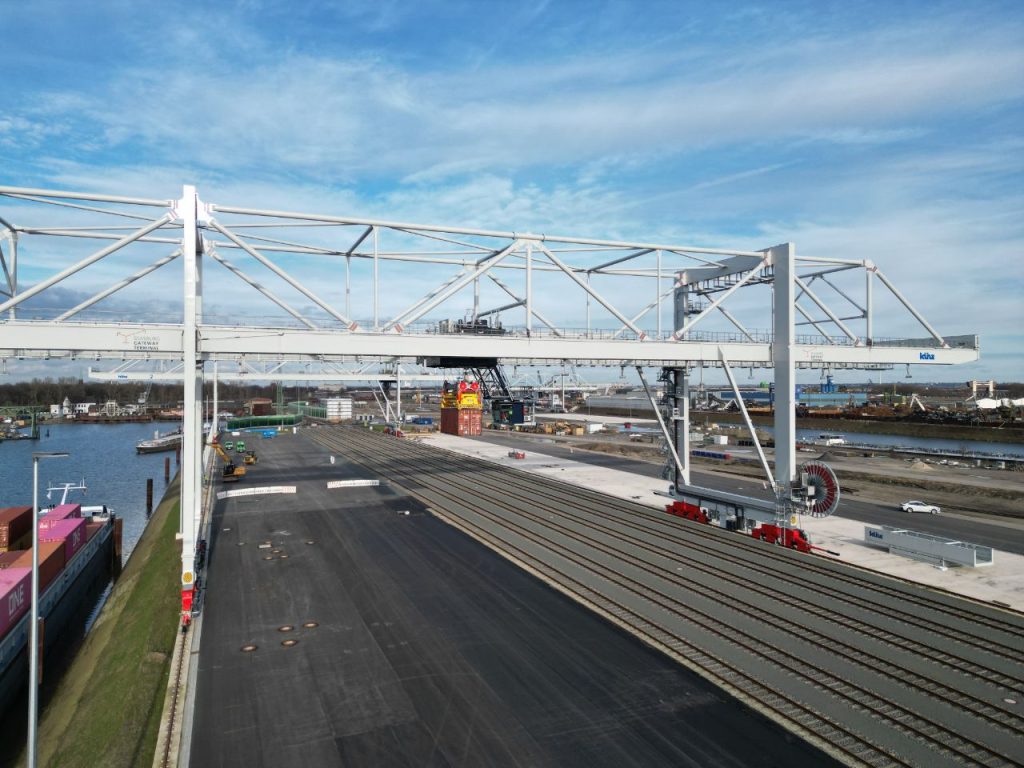Duisburg Gateway Terminal handles first ever containers

The Duisburg Gateway Terminal (DGT) has unloaded its first-ever containers as part of a test run. The DGT, which will be the largest inland terminal in Europe upon completion, will start operations in summer 2024. The container unloading was an important step towards that end, according to DGT.
The DGT was announced by Duisport, the operator of the port of Duisburg, in 2019. The aim of the project is to become the largest inland terminal in Europe and to achieve one hundred per cent climate-neutrality. The terminal is being built on the Coal Island of the German port and will cover over 220,000 square metres, with a total of 65,000 container space available.

The port aims at a ‘revolutionary modal split’ with 40 per cent of rail, 40 per cent of inland shipping and 20 per cent of road transport. To that end, the terminal will contain six cranes, twelve rail freight platforms of 730 metres in length, five loading zones and three berths for barges. The DGT aims to start operations in the summer of 2024 as the first containers arrive at the terminal. It should be able to handle containers of up to 43 tonnes.
Also read:





